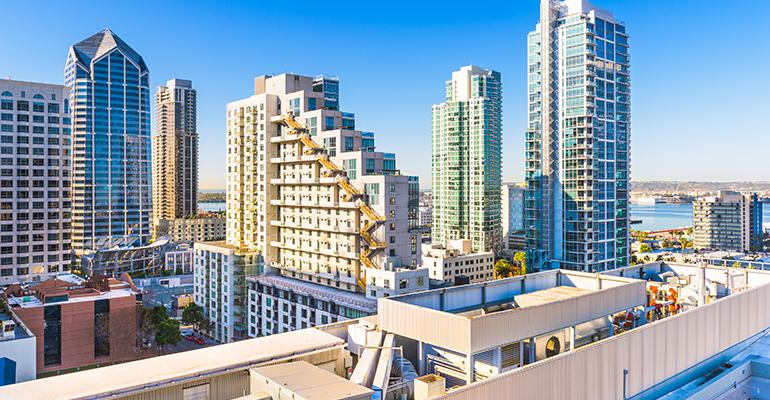Mixed-use developments are rapidly becoming one of the most popular product types in U.S. development.
Developers and investors alike are increasingly seeking out opportunities to integrate product types in order to achieve the ultimate goal of creating destinations that draw residents, tenants, visitors and patrons to engage, interact, live, shop, work and play.
U.S. construction boomed in 2017, reaching an all-time high of $1.26 trillion in construction spending. Mixed-use developments made up a substantial portion of this spending.
The question is: why are we seeing such a rapid influx?
As one of the most active developers in San Diego with several mixed-use developments under construction, here are the top reasons mixed-use developments are on the rise.
Solve a problem of effective land use in supply-constrained areas
Mixed-use developments solve a problem in terms of effective land use. This is especially true in dense, supply-constrained markets such as major metros and coastal regions across the United States.
The days of large-scale single products in urban areas are on the decline as the trend toward urbanization and walkable communities continues. Investors and cities are able to more efficiently utilize land to deliver environments that infuse new life into communities by integrating a variety of different uses into one product.
For example, we are developing an infill mixed-use project in Solana Beach that includes multifamily, retail, office and restaurant components. A transformation is underway in this close-knit beach community, and our new development is strategically located on the same street as the community’s existing open-air retail center and in close proximity to several other redevelopments currently underway. By using this land to serve multiple purposes, we are capitalizing on the demand for more high-end restaurants, shopping and living options, and creating our own micro-community in the neighborhood, while also supporting the ongoing revitalization of the city.
Meet consumer demand
Lifestyle preferences today differ significantly from those of the past.
Consumers expect convenience. They want to be able to walk downstairs from their apartment to a restaurant, coffee shop, grocery store, retail store or their office without having to leave their community or get into a car. This is especially true in major markets.
Our society has become conditioned to immediate gratification. Consider the infinite number of convenience apps and services available at all times, such as Postmates or DoorDash, which allow consumers to have items delivered directly to their door without having to leave their home. This is a key demand driver behind the rise of mixed-use projects.
As we evolve to meet consumers’ needs, developers will continue to seek out opportunities to ensure that projects are walkable, community-focused environments that provide a sense of convenience, as well as a vibrant atmosphere offering the all-encompassing experience consumers and residents crave.
Provide diversification for investor portfolios
Mixed-use developments also provide much-needed diversification, which provides balance to an investor’s portfolio and offers some downside protection.
Because these properties incorporate a variety of uses and tenants, investors and developers can protect themselves against large vacancies compared to single-use products.
Further, by incorporating a variety of uses, owners can strategically roll tenants and steadily increase rents, resulting in strong long-term NOI.
As this newest wave of U.S. development continues, we will see a continued increase in mixed-use projects throughout the country. Cities and developers understand that effectively using land to create multi-use destinations brings deep value to communities. Further, investors understand that they can meet consumer demands, while also diversifying and protecting their portfolios by investing in mixed-use projects. This is the wave of the future, and those who are positioned to bring mixed-use assets into communities will reap strong benefits for the long-term.
Adam Robinson is the founder and president of RAF Pacifica Group, a privately held, full-service commercial real estate investment firm that acquires, owns and develops industrial and office properties. Contact him at [email protected].





